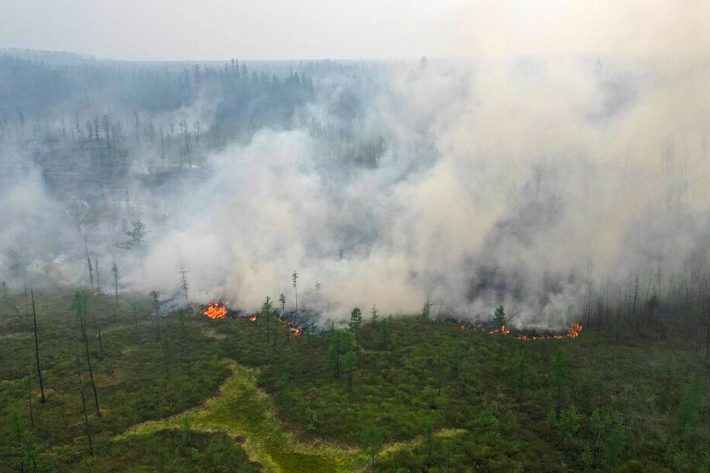Research from the U.S. National Oceanic and Atmospheric Administration (NOAA) shows that the Arctic tundra has become a net source of planet-warming gases this year after serving as an important carbon sink for thousands of years.
The Arctic’s role as a net absorber of Earth’s carbon dioxide has changed dramatically, largely due to a decades-long increase in wildfires in some parts of the tundra, researchers say.
Circumpolar wildfire emissions have averaged 207 million tonnes of carbon per year since 2003, they said, adding that 2024 was the second-highest year for wildfire emissions north of the Arctic Circle.
Elsewhere on AF: Saudi Arabia and oil producers block hopes for U.N. plastics treaty
Between May and October, wildfires occur regularly in several areas of the tundra, including Alaska, Siberia, and Alberta. These fires often start with lightning strikes and are exacerbated by the dry conditions in these cold regions.
But traditionally, as plants regrow after wildfires, they tend to reabsorb carbon dioxide from the atmosphere over the next few decades.
Researchers at the National Oceanic and Atmospheric Administration say the current trend of more frequent and severe fires not only hinders the carbon cycle but also triggers the burning of carbon underground.
They say the increased heat is also accelerating the melting of tundra permafrost, releasing more carbon dioxide and methane into the atmosphere.
“Together, these changes are pushing the Arctic into uncharted territory,” the researchers noted.
NOAA reports that permafrost temperatures at nearly half of Alaska’s long-term monitoring stations reached their highest ever in 2024.
On average, this year has been the second-highest permafrost temperature ever recorded in Alaska, the report added.
The study’s researchers also noted that the Arctic is warming “four times faster than global warming.” This is also the 11th consecutive year that Arctic temperatures have risen above the global average.
“We need accurate, comprehensive and comprehensive knowledge of how climate change will affect the amount of carbon absorbed and stored in the Arctic, as well as the amount of carbon released back into the atmosphere, in order to effectively respond to this crisis.” explain Dr. Sue Natalie, a scientist at the Woodwell Climate Institute, was one of the researchers on the study.
Also read:
Scientists fear nature’s carbon sinks are failing – The Guardian
Will melting glaciers trigger volcanic eruptions? – Reuters
As the world faces 3.1 degrees Celsius of warming, funding gaps undermine climate talks
Climate change costs China $32 billion in just one quarter
Flood or drought: climate change exacerbating global water crisis
Climate change ‘fuels’ rainfall, triggering deadly landslides in India
Lackluster COP29 deal shows climate cooperation is under pressure
Survey finds Asian steelmakers failing to switch to renewable energy














